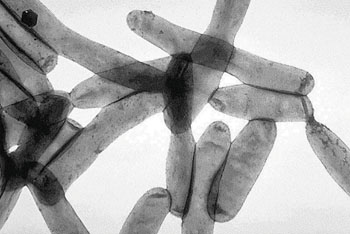New Protocol Rapidly Detects Three Legionella Species
By LabMedica International staff writers
Posted on 01 Mar 2016
An innovative protocol has been developed for the detection of the three most prevalent Legionella species, enabling the source of the infection to be located in just eight hours.Posted on 01 Mar 2016
The genus Legionella is a pathogenic group of Gram-negative bacteria that includes the species L. pneumophila, causing legionellosis and illnesses caused by Legionella include a pneumonia-type illness called Legionnaires' disease and a mild flu-like illness called Pontiac fever.
Scientists at the Polytechnic University of Valencia (UPV; Spain) initially based their investigation on a study carried out by a Japanese research group aiming to detect as many as four Legionella species simultaneously. However, the UPV team found that this approach was not viable and began devising a protocol for just three species: L. pneumophila (the bacteria responsible for 90% of human Legionella cases, L. micdadei and L. longbeachae. The protocol is considered a breakthrough that relies on the combined use of a multiplex polymerase chain reaction (Multiplex PCR) and pretreatment with propidium monoazide (PMA).
The new protocol brings detection time down from 14 days to just eight hours, which is a marked improvement on the most commonly used detection method. It can also be used successfully in very contaminated samples, where existing methods cannot. Yolanda Moreno Trigo, PhD, the senior scientist on the project, said, “We concentrated the sample, broke the bacteria in order to extract its DNA and then used Multiplex PCR to identify the different Legionella species. The Multiplex PCR amplifies the DNA of the target species, making it easier to identify them. Pretreatment with PMA allows us to immediately discard the DNA of the dead cells, which we are not interested in.”
Related Links:
Polytechnic University of Valencia















